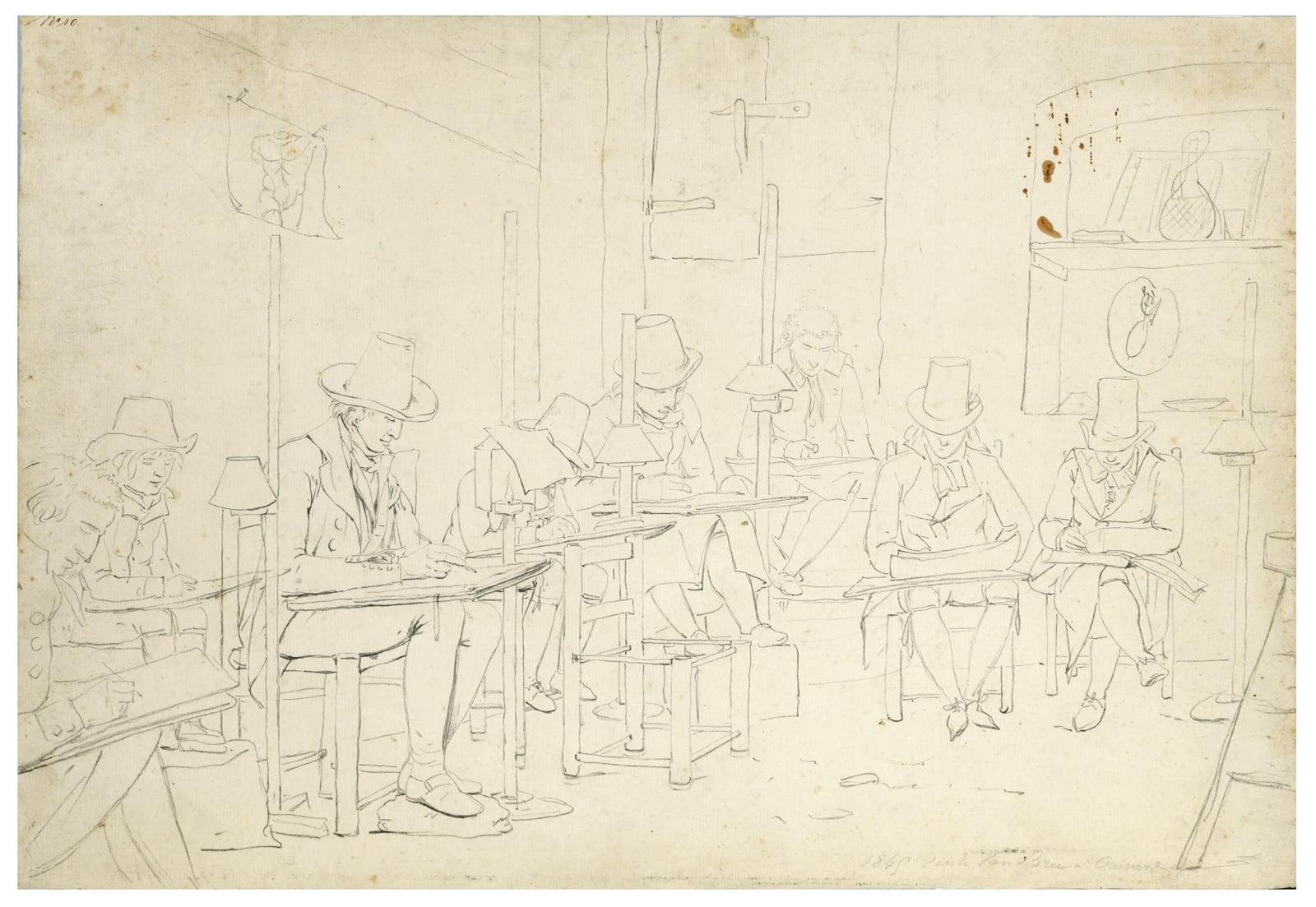Mathieu Ignace van Bree (Antwerp 1773 - 1839)
The Drawing School
pencil on paper
372 x 547 mm
inscribed '1845 vente van bree à Anvers', lower right
%3Cdiv%20class%3D%22artist%22%3EMathieu%20Ignace%20van%20Bree%20%28Antwerp%201773%20-%201839%29%3C/div%3E%3Cdiv%20class%3D%22title_and_year%22%3E%3Cspan%20class%3D%22title_and_year_title%22%3EThe%20Drawing%20School%3C/span%3E%3C/div%3E%3Cdiv%20class%3D%22medium%22%3Epencil%20on%20paper%3C/div%3E%3Cdiv%20class%3D%22dimensions%22%3E372%20x%20547%20mm%3C/div%3E%3Cdiv%20class%3D%22signed_and_dated%22%3Einscribed%20%271845%20vente%20van%20bree%20%C3%A0%20Anvers%27%2C%20lower%20right%3C/div%3E
Matthieu Ignace van Bree was born in Antwerp in 1773. At age ten he was first recorded as a pupil at the Antwerp Academy; he had his own studio there...
Matthieu Ignace van Bree was born in Antwerp in 1773. At age ten he was first recorded as a pupil at the Antwerp Academy; he had his own studio there as 'professeur-adjoint' from 1794. He was taught by the landscape and genre painters Petrus Johan van Regemorter and Guillaume Schaeken. In 1797 he went to Paris, to study with the neoclassical painter François-André Vincent. That same year he participated in the Salon, winning second prize in the Prix de Rome with his Death of Cato in Utica (now kept in the Philbrook Museum of Art in Tulsa, Oklahoma).
Having requested to see the winning paintings from the general competition, Josephine Bonaparte particularly admired Van Bree’s work and commissioned a few paintings from him for her residences, as well as his help in constituting a collection of Flemish paintings. In 1804 van Bree returned to Antwerp, where he became a professor at the Antwerp Academy, which had just reopened after initially having been closed by the French occupiers. After the French occupation he became a member of the commission responsible for recovering works of art confiscated by the French and retrieved many works by Rubens.
In 1821 van Bree travelled to Italy, visiting Florence - where he made drawings in the Uffizi after portraits by Rafael and da Vinci - and Rome. After the resignation of Willem Jacob Herreyns in 1827, he became director of the Antwerp Academy. He trained some of the eminent painters of the next generation, including Egide Charles Gustave Wappers, Nicaise de Keyser, Jan August Hendrik Leys, Antoine Wiertz, Jules Victor Génisson and Ferdinand de Braekeleer the Elder in whom he instilled his admiration for the masters of the Flemish school, and in particular, Rubens and van Dyck.
Stylistically, van Bree started out in the French neo-classical style with themes inspired by antiquity, greatly influenced by the work of his teacher Vincent and especially by Jacques-Louis David. After the expulsion of the French in 1813, he became one of the founders of the historical school of painting. The present work, evidently drawn from life during one of his drawing classes, gives us a very nice insight into the practice of art-teaching in the early 19th century.
Provenance
The artist's estate;
His sale, Antwerp, 1845 (according to the inscription);
Private collection, France.
Share
- X
- Tumblr
Copyright © 2025 Galerie Lowet de Wotrenge

